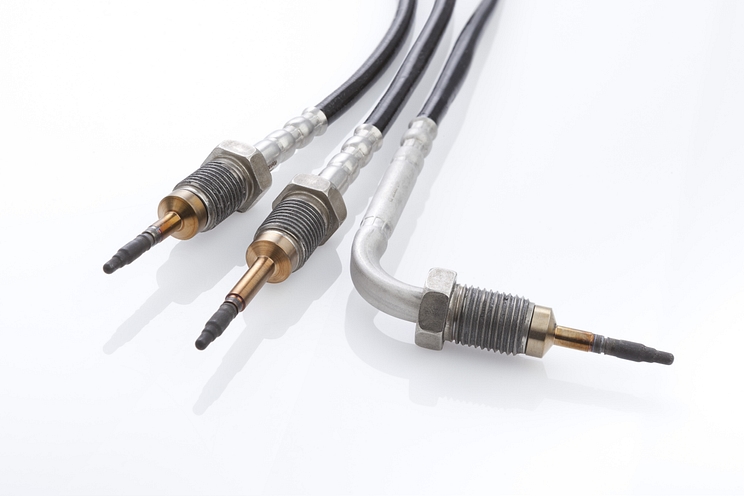Within diesel engines, the exhaust gas temperature sensor (EGTS) can play multiple roles. Firstly, it detects the temperature of the exhaust gas, relaying this information back to the engine control unit (ECU) so it can take corrective action to keep temperatures within the expected range and protect engine components. Secondly, it monitors the temperature at the entry and exit points of the diesel particulate filter (DPF), helping maintain the correct temperature for optimum regeneration that keeps exhaust emissions as low as possible.
Based on information provided by the EGTS, the ECU can actively control engine running conditions through a number of measures such as lowering turbo boost pressure or changing valve or fuel injection timing.
It’s important for an EGTS to give a fast, accurate reading to allow an engine to regulate itself efficiently. As a result of long-standing innovation, DENSO pioneered the Negative Temperature Coefficient (NTC) EGTS sensor, wherein a high temperature corresponds with a low resistance, and vice versa. This technology is compatible with a large proportion of Europe’s car parc and supports a wide range of specifications and temperature ranges.























































